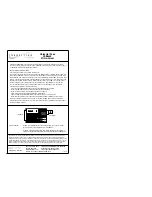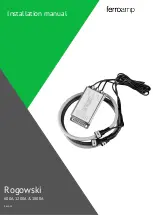
RHE26/27 Installation & Startup Guide – Doc. No. 8.2.1.06 – Ver. 1.40
5
2
Quick Start
A complete flowmeter system typically consists of a:
RHMxxx Sensor
RHExx Transmitter
Interconnection cable
Carry out the following steps to prepare the flow meter for operation:
1)
If not already done, install the RHM sensor in line and make sure that the interconnecting
cable connections are made (refer to the RHM Coriolis Sensor Installation Guide for
additional information on mechanical installation). Connect the interconnecting cable to
the RHE using the terminating scheme that matches the RHM electrical connection type
(see section 3.2.1 for electrical termination schemes).
2)
Connect all signal input, output and communications interface wiring as required (section
3.2.3).
3)
Connect power supply (section 3.2.2).
NOTE:
For safety, always connect the protective ground.
For installations in hazardous areas, a protective ground must always be connected.
4)
Switch on the power supply. The display backlight will light up and after a power up
sequence, the display will show the flow measurement screen. In case of an error the
backlight will turn red.
5)
Flush the RHM flow sensor with process fluid and ensure that it is free of air bubbles (in
case of a liquid process fluid) or liquid droplets (in case of a gaseous process fluid).
6)
Wait until the RHM temperature has stabilized and then carry out a zero point calibration
(section 4.3):
Ensure a zero flow condition is present in the flow sensor by closing isolation valves
Initiate zeroing of the sensor and wait for the zeroing procedure to complete
Open isolation valves to allow flow through the sensor
3
Installation
3.1
Mechanical Installation
The RHE26 and RHE27 are panel mount transmitters with housings compliant to IEC 61554.
Installation is through panel cutouts of the following dimensions:
Table 1: Cutout Dimensions
RHE26
92
−0
+0.8
mm x
92
−0
+0.8
mm
RHE27
138
−0
+1.0
mm x
92
−0
+0.8
mm
Before cutting any holes, ensure that there is adequate clearance to accommodate cables behind
the transmitter once installed.
To assist smooth installation, deburr cutout before installing transmitter.






































